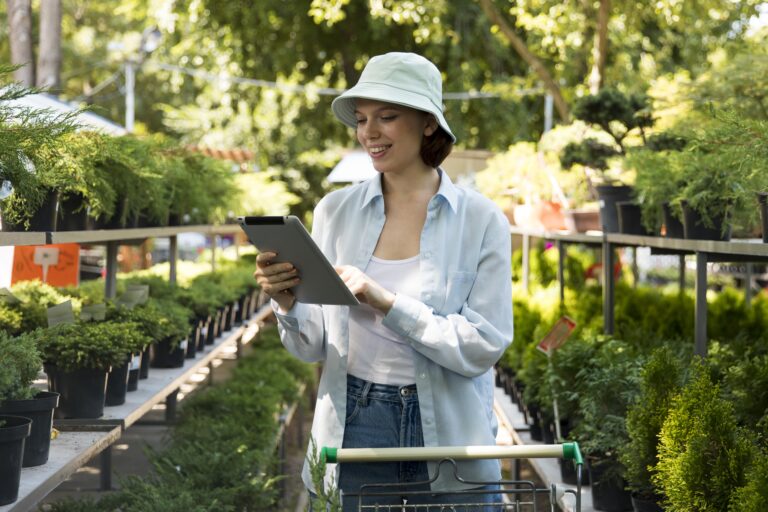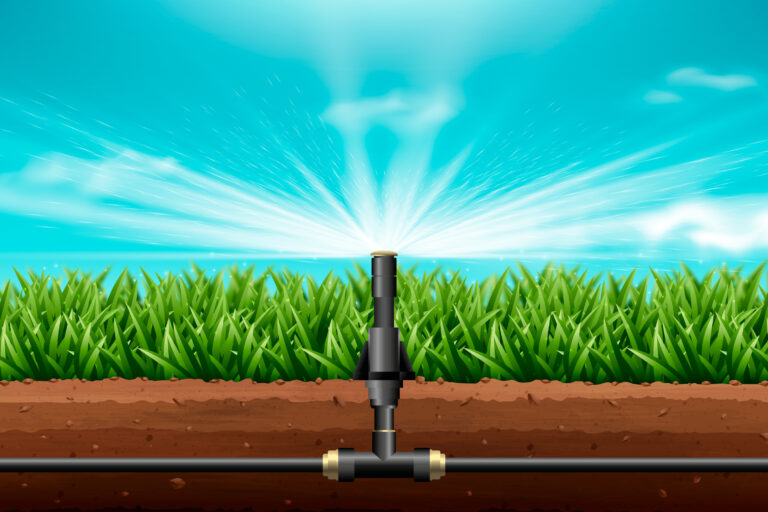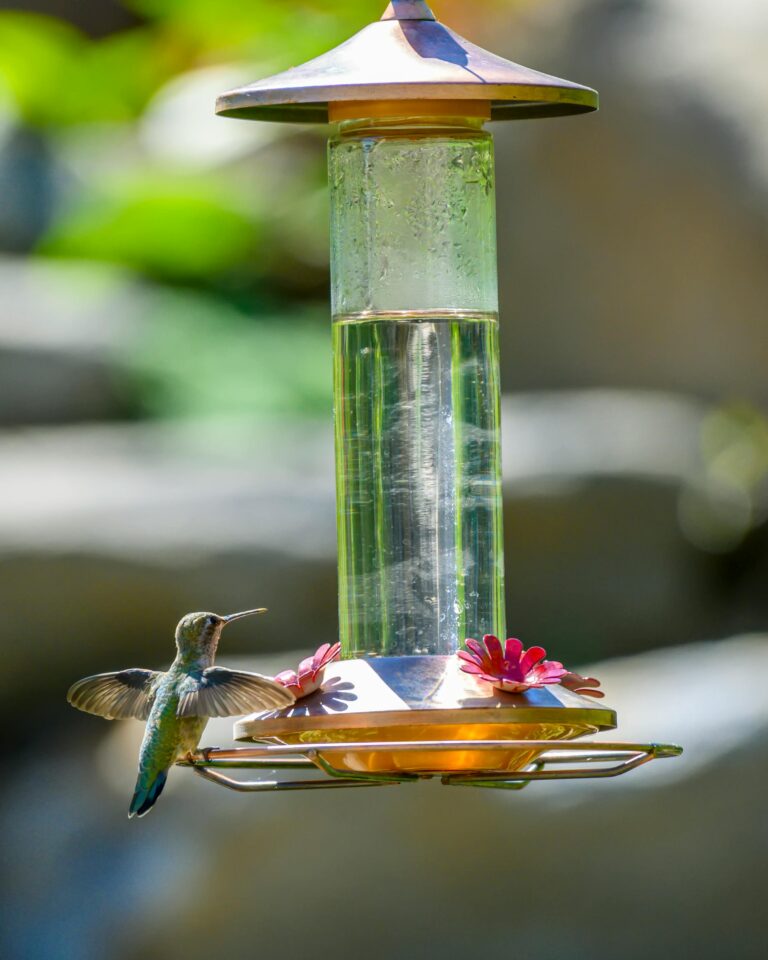How to Define a Garden?: Cultivate Your Eden
A garden is more than just a patch of land with plants. It is a space for beauty, relaxation, and growth.
Defining a garden can be a personal journey. It varies from one person to another. For some, a garden is a place to grow vegetables and herbs. For others, it is a peaceful retreat filled with flowers and trees. Understanding how to define a garden helps you connect with nature and express your creativity.
This process often involves exploring your preferences, needs, and the environment around you. Whether you have a small balcony or a large backyard, defining your garden will guide your choices and make your space more enjoyable. Let’s explore what makes a garden uniquely yours.
The Essence Of A Garden
A garden is more than just plants and soil. It is a living space. It connects us to nature. A garden reflects our personality and values. It offers peace and joy. Defining your garden’s essence is important. It guides how you create it.
Defining Your Green Space
Start by asking yourself some questions:
- What do I want to grow?
- How much time can I spend?
- Do I prefer flowers, vegetables, or both?
- What is my budget?
Use these answers to shape your garden. Choose plants that fit your needs. Consider the space available. Think about sunlight and shade. Water access is also key.
| Plant Type | Sun Requirements | Care Level |
|---|---|---|
| Roses | Full Sun | Moderate |
| Tomatoes | Full Sun | Moderate |
| Ferns | Shade | Easy |
| Succulents | Full Sun | Easy |
Remember, your garden is personal. It should reflect who you are.
Gardens Through History
Gardens have a rich history. They show how cultures value nature. Ancient Egyptians grew gardens for food and beauty. The Romans created villas with lush landscapes.
In the Middle Ages, gardens were practical. They provided herbs and vegetables. The Renaissance brought ornamental gardens. They became symbols of wealth.
Today, gardens vary widely. Some are wild and free. Others are structured and formal. Each garden tells a story. Understanding this history enriches our gardening experience.

Credit: www.buildajapanesegarden.com
Starting With Intentions
Defining a garden starts with clear intentions. Know what you want. Do you dream of a peaceful retreat? Or a lively place for friends? Your intentions shape everything. They guide your choices and actions in the garden.
Personal Oasis Or Community Hub?
Decide what type of garden you want. A personal oasis offers tranquility. It allows you to relax alone. A community hub invites social gatherings. It brings people together. Think about what resonates with you.
- Personal Oasis: Focus on plants that soothe. Choose colors and scents that calm.
- Community Hub: Consider space for gatherings. Add seating and areas for activities.
Setting Goals For Your Garden
Setting goals makes your vision clear. Goals help you stay focused. Ask yourself these questions:
- What plants do I want?
- How much time can I spend?
- What is my budget?
- Will I grow food or flowers?
- Do I want a space for kids or pets?
Write down your answers. This list becomes your guide. Adjust your goals as needed. Don’t hesitate to change things. Your garden should reflect your intentions.
Choosing The Right Location
Finding the right spot for your garden is crucial. The location affects plant growth. Consider sunlight, shade, soil type, and the land’s shape. These factors help you create a thriving garden.
Assessing Sunlight And Shade
Plants need sunlight to grow. Observe how sunlight moves across your yard. Notice which areas get full sun and which stay shady.
Most vegetables and flowers prefer at least six hours of sunlight daily. Some plants thrive in partial shade. Think about what you want to grow. Choose a spot that meets their light needs.
Watch for shadows from trees or buildings. These can block sunlight. Ensure your chosen spot gets enough light throughout the day.
Soil Types And Topography
Healthy soil is vital for your garden. Different plants need different soil types. Test your soil to check its quality. Look for clay, sand, or silt.
Clay holds water but drains slowly. Sandy soil drains quickly but may lack nutrients. Loamy soil is often the best choice. It holds moisture and drains well.
Topography also matters. Flat areas are easier to work with. Slopes can be tricky but may provide good drainage. Choose a location that suits your gardening plans.
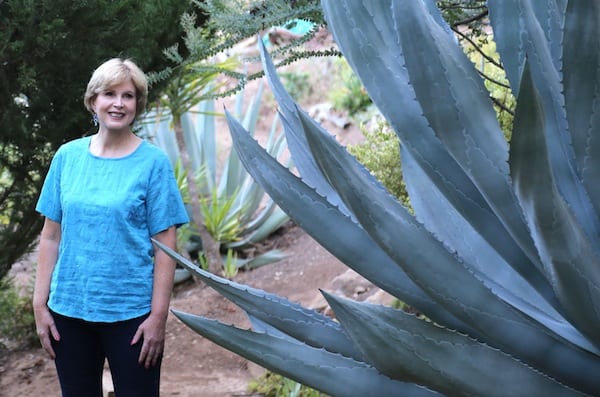
Designing Your Garden Layout
Designing your garden layout is an important step. It shapes how your garden will look and feel. A well-planned layout makes your garden more enjoyable. It can also improve its function.
Traditional Vs Contemporary Styles
Choosing between traditional and contemporary styles is key. Each style has unique features.
| Feature | Traditional Style | Contemporary Style |
|---|---|---|
| Plants | Classic flowers and shrubs | Bold, unique plants |
| Layout | Symmetrical and formal | Asymmetrical and free-form |
| Materials | Natural stone, wood | Metal, glass, concrete |
| Colors | Soft pastels | Bright, bold colors |
Traditional styles often feature classic plants and symmetrical layouts. They create a sense of order and elegance. On the other hand, contemporary styles embrace bold colors and unique materials. They offer a more relaxed and playful feel.
Incorporating Pathways And Zones
Pathways and zones help organize your garden. They guide visitors through different areas.
- Pathways: Use stones, gravel, or bricks.
- Zones: Create separate areas for different activities.
Consider these zones:
- Relaxation Zone: A spot with chairs and shade.
- Vegetable Garden: A place for growing food.
- Flower Bed: An area for colorful blooms.
Pathways can connect these zones. They can be straight or curved. Choose what feels right for your space. This layout makes your garden functional and enjoyable.
Selecting Plants And Elements
Choosing the right plants and elements is key to defining your garden. These choices shape the look and feel of your space. Start by thinking about what you want. Do you want flowers? Vegetables? Or maybe a mix of both? This section will guide you through selecting the best plants and elements for your garden.
Native Species And Biodiversity
Using native plants boosts biodiversity. Native species thrive in your local climate. They need less water and care. This makes them easier to grow. They also attract local wildlife. Birds, bees, and butterflies love these plants. A garden with native species supports the ecosystem.
Choose plants that fit your soil and sun conditions. Research what grows well in your area. A mix of plants adds beauty and interest. Different heights and colors create a lively space. Aim for a balance. This helps with plant health and creates a stunning display.
Structures And Decorations
Structures and decorations enhance your garden’s charm. Consider adding paths, benches, or trellises. These elements create focal points. They also guide visitors through your space. Choose materials that match your style. Wood, stone, and metal all work well.
Decorations can be simple or elaborate. Think about sculptures, bird baths, or colorful pots. These add personality to your garden. Lighting can also play a role. Use solar lights to highlight pathways or special plants. This creates a warm atmosphere at night.
Cultivating Your Garden
Cultivating your garden takes time and effort. Each step helps create a vibrant space. Begin with understanding your soil and climate. This knowledge shapes your planting choices. A well-cultivated garden can bring joy and beauty.
Planting Techniques
Start by choosing the right plants for your garden. Consider their size, color, and growth habits. Plant seeds or seedlings at the right depth. Follow the instructions on the seed packets.
Spacing is important. It allows plants to grow without crowding. Use rows or clusters based on your garden style. Water your plants gently after planting. This helps settle the soil around the roots.
Ongoing Garden Care
Regular care keeps your garden healthy. Water your plants deeply but not too often. Pay attention to the weather and adjust accordingly. Remove weeds regularly to reduce competition.
Fertilize your plants as needed. Use organic options for a natural approach. Prune dead or damaged leaves to encourage new growth. Monitor for pests and diseases. Early action can save your plants.
Enjoy the process of cultivating your garden. It offers lessons in patience and care. Watch your plants thrive and create beauty around you.
Sustainable Gardening Practices
Sustainable gardening practices help create a healthy garden. They focus on using methods that protect the environment. This approach supports biodiversity and conserves resources. You can enjoy a beautiful garden while being eco-friendly. Let’s explore some key practices for sustainable gardening.
Organic Vs. Inorganic Approaches
Organic gardening uses natural methods. It avoids chemicals and synthetic fertilizers. Instead, it relies on compost, crop rotation, and companion planting. These techniques improve soil health and reduce pests naturally.
Inorganic gardening often uses chemical fertilizers and pesticides. These can provide quick results but may harm the soil. They can also affect local wildlife and water quality. Choosing organic methods supports a healthier ecosystem.
Water Conservation And Composting
Water conservation is vital for sustainable gardening. Use drip irrigation or rain barrels to save water. Mulching helps retain moisture in the soil. These methods reduce water waste and keep plants healthy.
Composting is another important practice. It turns kitchen scraps and yard waste into rich soil. This process enriches the garden and reduces landfill waste. Composting also reduces the need for chemical fertilizers.
Engaging The Senses
Creating a garden is more than planting flowers. It is about engaging all five senses. A well-designed garden invites you to see, smell, touch, hear, and taste. Each sense adds a layer of enjoyment. This makes your garden a lively and vibrant space.
Color
Color brings life to your garden. Bright blooms create energy. Soft pastels offer calmness. Consider seasonal changes. Spring brings fresh greens and colorful tulips. Summer showcases bold sunflowers and rich roses. Autumn offers warm hues of red, orange, and gold.
Color can influence mood. Warm colors feel inviting. Cool colors provide a sense of peace. Mix and match colors for visual interest. Use contrasting shades to draw attention to specific areas.
Fragrance
Fragrance transforms your garden into a sensory delight. The sweet scent of jasmine can brighten your day. Lavender offers a calming aroma. Herbs like basil and mint add freshness. Plant fragrant flowers near seating areas. This invites relaxation and enjoyment.
Consider timing. Some plants bloom in the morning, others at night. This creates different experiences throughout the day. A fragrant garden is memorable and inviting.
Texture
Texture adds depth to your garden. Smooth leaves contrast with rough bark. Soft petals invite touch. Hardy plants create structure. Mix plants with various textures for visual appeal. This keeps the garden interesting.
Use stones, wood, and gravel for pathways. They provide tactile experiences. Touching different materials enhances the garden visit. Texture invites exploration and curiosity.
Soundscapes And Edible Delights
Soundscapes enhance your garden experience. Birds chirping, leaves rustling, and water flowing create a peaceful environment. Install a small fountain for soothing water sounds. This adds relaxation to your outdoor space.
Edible plants invite interaction. Grow herbs, fruits, and vegetables. They engage taste and touch. Fresh basil adds flavor to meals. Juicy tomatoes provide a delightful bite. Edible gardens offer fun and nourishment.
Overcoming Challenges
Creating a garden is rewarding but not easy. Many challenges can arise. Knowing how to handle these challenges helps ensure a successful garden. Here are two common issues gardeners face.
Pest Control And Disease Management
Pests can ruin your plants quickly. Insects like aphids and beetles often attack. Regular checks can help catch them early. Use natural pesticides when possible. They are safer for the environment.
Planting companion plants can also help. Some plants deter pests. Others attract beneficial insects. These insects eat harmful pests. This creates a balance in your garden.
Diseases can spread fast among plants. Fungal infections are common in humid weather. Keep plants healthy by watering at the base. This reduces moisture on leaves. Remove any dead or diseased plants right away.
Weather And Climate Considerations
“`
Community And Sharing
Gardening is not just about plants. It is also about people. Community gardens bring neighbors together. They create a space for sharing ideas and resources. Growing together strengthens bonds. It helps everyone learn from each other.
Gardening As A Social Activity
Gardening can be a fun group activity. Friends and family can work side by side. Planting, weeding, and harvesting become joyful moments. Sharing tools and tips makes it easier. People feel connected to their community.
Many gardens host social events. Potlucks, workshops, and fairs are common. These gatherings foster friendships. They create a sense of belonging. Everyone benefits from the shared experience.
Educational Opportunities And Events
Community gardens often offer educational programs. These can include classes on plant care or composting. Local experts may share their knowledge. People learn new skills together.
Events like garden tours and open houses attract visitors. They inspire others to start gardening. Schools can partner with gardens for hands-on learning. Children gain valuable lessons about nature and food.
Sharing knowledge enriches the community. It builds a culture of learning. Everyone grows, both in skills and friendships.
Evolving With Your Garden
Gardening is a journey. Your garden grows and changes over time. It reflects your choices and your growth. Embrace the changes. Every season brings new lessons and opportunities.
As you tend to your plants, you also learn about yourself. Your garden can show your mood and style. It can be a space of peace or creativity. Adapting to these changes can enhance your gardening experience.
Learning And Adaptation
Each plant teaches you something new. Some thrive in sun; others prefer shade. You learn to observe what works best. This knowledge helps you adapt your garden.
Seasons also teach valuable lessons. Spring brings new life. Summer demands care. Fall requires preparation for winter. Each phase invites you to reflect and adjust.
The Garden As A Reflection Of Self
Your garden is a canvas. It showcases your personality and values. Colors, shapes, and textures reveal your taste. A wildflower garden can show your love for nature.
Changing your garden can mirror personal growth. As you change, so can your plants. A new interest in herbs might inspire a kitchen garden. Your garden evolves just as you do.
In this way, your garden becomes a part of you. It holds memories and stories. Each flower and leaf has meaning. Embrace this connection to create a space that inspires you.
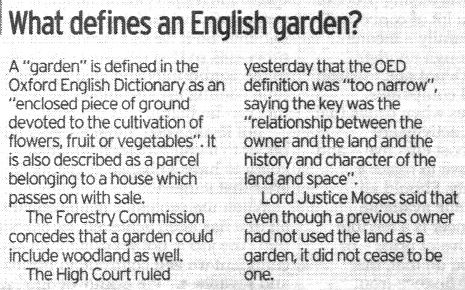
Credit: www.seered.co.uk
Frequently Asked Questions
What Is The Definition Of A Garden?
A garden is a planned space where plants are cultivated. It can include flowers, vegetables, herbs, and ornamental plants. Gardens can be private or public and serve aesthetic, recreational, or functional purposes. They promote biodiversity and can enhance the beauty of any landscape.
How Can I Create A Garden At Home?
To create a garden at home, start by choosing a suitable location. Assess sunlight, soil quality, and water access. Select plants that thrive in your climate. Prepare the soil, plant your chosen greenery, and maintain it with regular watering and care.
Enjoy watching your garden flourish over time.
What Are The Benefits Of Having A Garden?
Gardens offer numerous benefits including stress relief and mental well-being. They promote physical activity and healthy eating through homegrown produce. Gardens also enhance property value and encourage biodiversity. Additionally, they provide a peaceful retreat and an opportunity for creativity and self-expression.
What Types Of Gardens Can I Create?
You can create various types of gardens including vegetable, flower, herb, or rock gardens. Other options include water gardens, butterfly gardens, and container gardens. Each type serves a unique purpose and can be tailored to fit your preferences and available space.
Choose what inspires you!
Conclusion
Defining a garden is simple and personal. Each garden reflects its owner’s style and needs. Whether you prefer flowers, vegetables, or a mix, it all matters. A garden can be a peaceful retreat or a lively gathering space. Remember, gardens need care and attention.
With the right approach, anyone can create their ideal garden. Take time to explore ideas. Find what works for you. Enjoy the process of growing and nurturing your garden. It’s all about your vision and passion. Happy gardening!




